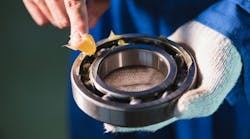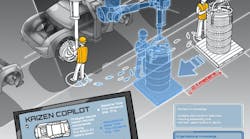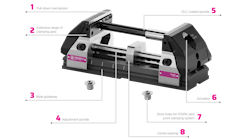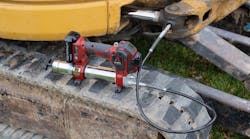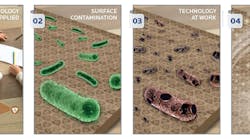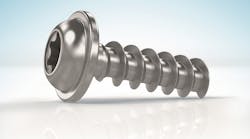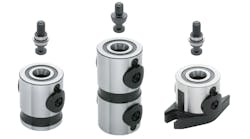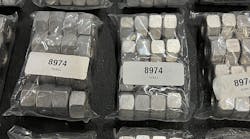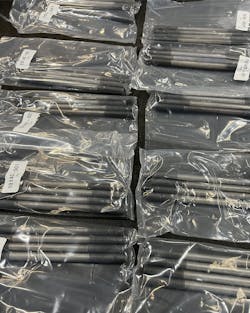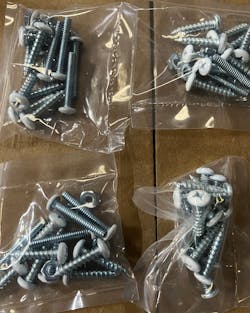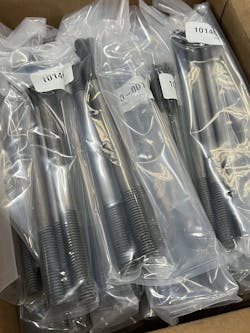OEMs are increasingly turning to fastener distributors to do more than just source fasteners. One such value-added service is kitting, where fastener components are packaged together to streamline assembly during manufacturing or for OEMs to send as installation kits to their customers. By outsourcing the production of these kits, OEMs benefit from not having to allocate space, invest capital or hire staff, with the added advantages of consolidating orders and invoice management.
“The value that an industrial fastener distributor can offer manufacturers really goes beyond providing quality fasteners at the best price,” says Johnny Rose, President of AFT Industries, a leading fastener and industrial supply distributor headquartered in Mansfield, Texas. “It’s about delivering the fasteners in whatever configuration or packaging is required—in this case to speed assembly or supply installation kits with their product to their customers.”
The truth is that kitting is generally a labor-intensive, manual process requiring trained staff and ample space. Kits are commonly manually assembled, checked for completeness, and packaged into heat-sealed or resealable bags. Small boxes are also popular for kitting.
“OEMs can certainly do their own kitting and many do but it requires them to dedicate quite a bit of space in a facility to prepare the kits, as well as hire and manage the staff to do the work," says Rose.
OEMs may also opt to invest in automated kitting equipment to manage high-volume needs. “That is a significant capital expenditure for the OEM and the equipment is going to take up valuable manufacturing space.”
For the same reasons OEMs want to outsource their kitting, fastener distributors are also sometimes reluctant to provide this service because it means shifting time, labor, and space to kitting.
“Not every fastener distributor wants to take on kitting work,” cautions Rose. “Kitting is often viewed in the industry as a task the distributor just has to do because the customer asks for it, but that doesn’t mean they do it well and they may not prioritize the work, as there generally isn’t much profit margin in it.”
When considering kitting outsourcing, Rose recommends selecting a fastener distributor with access to a wide variety of parts, the capability to prepare kits in a range of volumes, and that offers kitting as a core service.
“As a place to start, look for a large fastener distributor with a broad assortment of fasteners,” says Rose. “They should offer a vast number of fastener options and sizes, which will eliminate the need to source from other distributors. Ultimately this means the kitting will be done faster and the distributor will be better able to manage parts changes in kits.”
An established distributor with over 30 distribution centers across the U.S., AFT offers hundreds of thousands of standard and custom fasteners, much of which are held in inventory to ensure timely delivery.
Registered as a single-site quality management system in conformance with ISO 9001:2015 and AS9100, kitting/assembly is one of a variety of services that AFT provides to OEMs. The company uses automated equipment or manual labor, depending on the volumes. Each kit is triple-checked during assembly to ensure all the correct parts are included.
AFT has the added capability to perform in-house plating and finishing, which can be helpful when producing kits for end users that vary in color. When working with a domestic supplier of plated fasteners as compared to offshore sources, customers benefit from a faster turnaround time and added flexibility when their fastener needs change.
“Think of a mailbox that you might buy at a big box store,” says Rose. “If it is a white mailbox, the parts in the install kit need to be painted white. If the box is brown, the parts need to match. Different-sized products can also have slightly different mounting requirements, which may require a different length screw or a spacer. Outsourcing the kitting for install kit variations like these simplifies the manufacturing process for the OEM.”
When an OEM has a fastener specification change, which happens “all the time” says Rose, outsourcing the kitting to a distributor makes it easier to source replacements and reduces the risk of being left with unwanted inventory.
“If it is a standard fastener part, we most likely will just sell the part to someone else,” says Rose. “But if the OEM is kitting in-house, they will certainly lose time and potentially money if they are stuck with parts they no longer need for the kits.”
An OEM may also require non-fastener parts included in their installation kit. “We have a lot of customers who want a part they make themselves, or one that we don’t produce added to the kit,” says Rose. “In these situations, they ship those parts to us and we will marry them all together in their kit and ship it back ready to use.”
Kitting volumes can vary significantly. AFT works with clients who may only need a few hundred kits, and with those for whom they prepare millions of kits each year. For larger volumes, established fastener distributors often invest in automatic kitting equipment. “We have a couple of machines that are automated for our high-volume orders,” says Rose.
While third-party kitting companies represent another option to an OEM, it adds another step to the manufacturing process.
“There are third-party companies that only provide kitting services, but you need to factor in the time and costs associated with shipping the fasteners to them,” says Rose. “You are probably going to add at least a week and a half to two weeks just for the transit time. Then it depends on how quickly they can do the work and ship them back. Plus, you have to factor in their markups.”
Outsourcing kitting also simplifies inventory management. By consolidating individual part SKUs into a smaller number of kits, there are fewer SKUs for the OEM to order, store, manage, and track.
For high-volume kitting needs, some fastener distributors are even willing to produce the kits and hold them in inventory as an on-demand supply for OEMs. Because kitting parts are generally pre-ordered and warehoused, there can also be greater price stability.
“Bottom line, all this work can be performed instead by a fastener distributor who can provide the parts in exactly the configuration needed for assembly. It’s about maximizing manufacturing efficiency and serving as a one-stop-shop for the OEM,” adds Rose.
With cost inflation continuing to impact OEMs in all industries, outsourcing kitting is a simple but very effective strategy that can offer meaningful savings in time, labor, space, and order management. Overall, it extracts more business value from the relationship an OEM has with their industrial fastener distributor.
For more information on kitting services for fasteners and other industrial parts, visit the AFT website at www.aftfasteners.com; call (877) 844-8595, or email [email protected].
